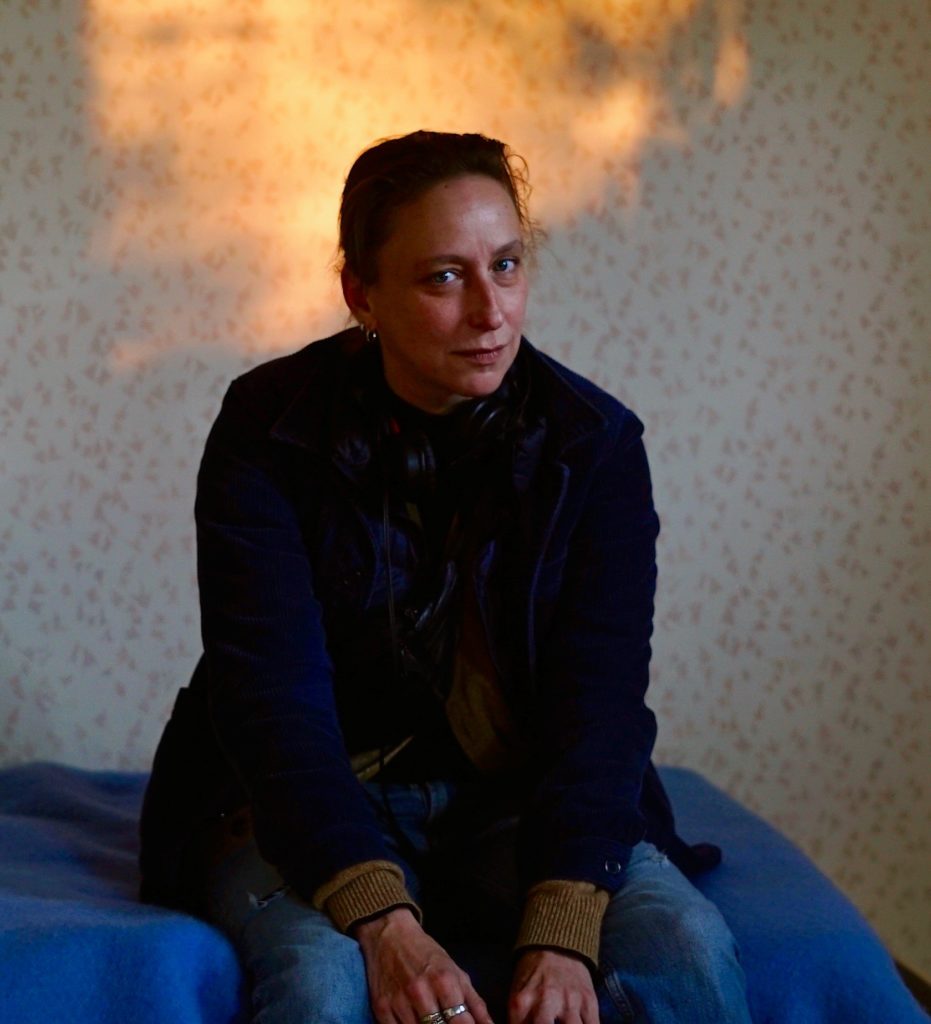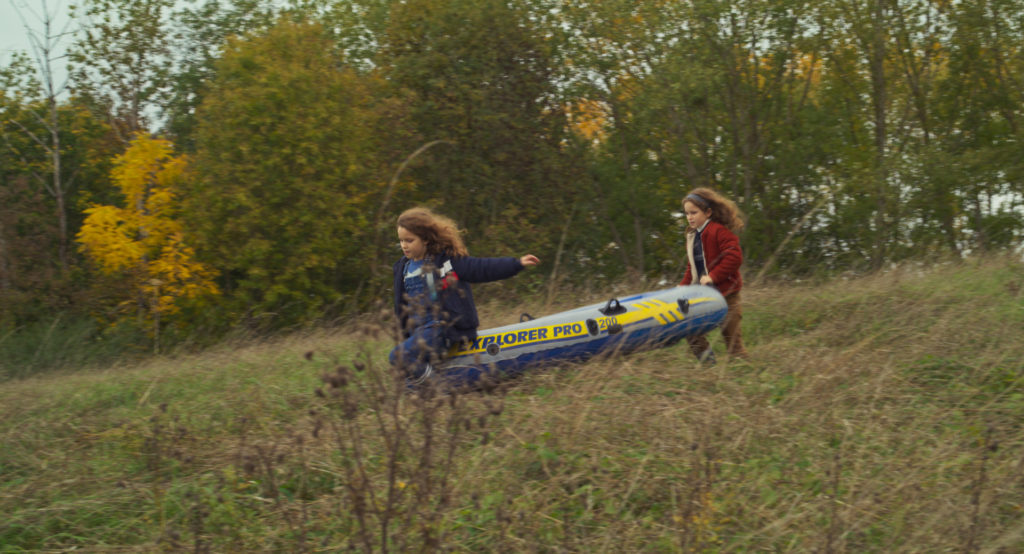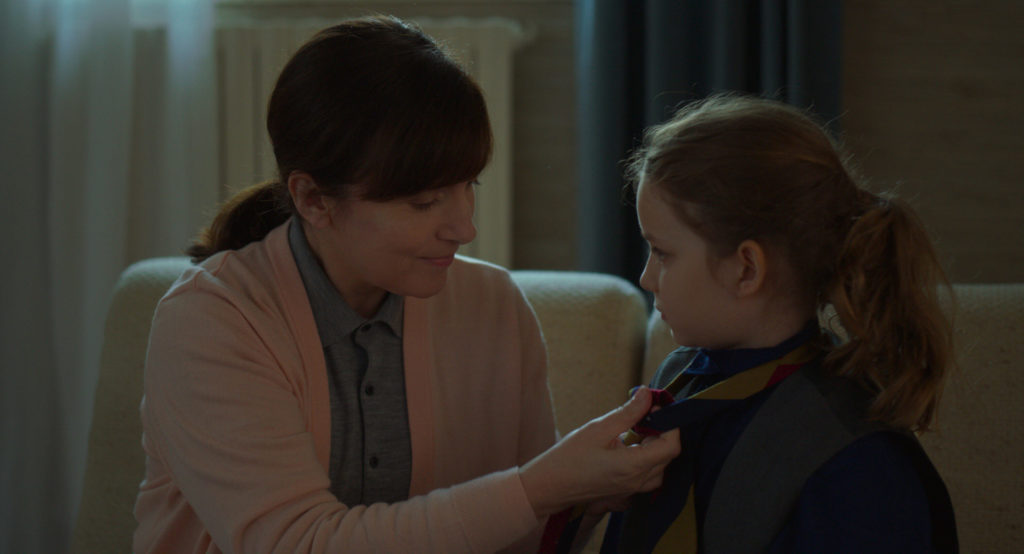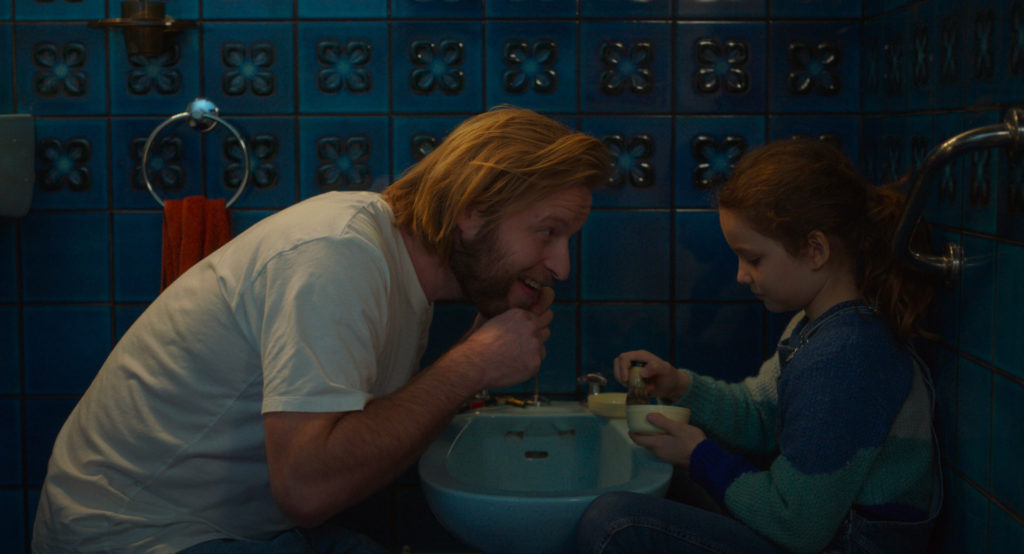Synopsis : Céline Sciamma continues to prove herself as one of the most accomplished and unpredictable contemporary French filmmakers with her follow up to PORTRAIT OF A LADY ON FIRE, the uniquely emotional, PETITE MAMAN. Following the death of her beloved grandmother, 8-year-old Nelly accompanies her parents to her mother’s childhood home to begin the difficult process of cleaning out its contents. As Nelly explores the house and nearby woods, she is immediately drawn to a neighbor her own age building a treehouse. What follows is a tender tale of childhood grief, memory and connection.

Directors Statement
“The story of Petite Maman came to me while I was writing Portrait of a Lady on Fire.
Its simplicity and obviousness haunted me, and I dreamt of it from time to time as a very tender and clear future. The film grew discreetly in that way, and I began to write it at the end of the international tour for Portrait. At the end of the French lockdown, when I reopened the file to consider resuming writing in June and rediscovered the first scene of the screenplay – the farewell to residents in a nursing home – I felt that the film was still relevant and perhaps more urgent than ever. Not least because it was about children. Children have experienced an impressive flood of crises and collective hardships in recent years. Although politicians have never officially addressed them, children have heard the world rumbling. I feel that it is vital to include them, to offer them stories, to look at them, to collaborate with them.”
The film is based on a very simple idea: the meeting and friendship between a little girl and her mother, as a child.
I explored and considered it as if it possessed some magical power. I had the impression that I was reflecting on a new matrix, that this situation belonged to everyone, and that I was going to provide my personal, private interpretation of it. Imagining oneself in a relationship with one’s parent as a child is an idea that everyone can play with, dreaming of one’s own story, reinventing a relationship. As an intimacy machine, it has no limits. I really enjoyed working on this idea; it was extremely moving and amusing. The film is inhabited by this enthusiasm, I hope.

Petite Maman is a new approach to the time travel story.
An intimate journey where the issue at stake is neither the future nor the past, but shared time. A journey without machines or vehicles. The film itself is the machine and, more precisely, its editing. A cut teleports the characters and brings them together.
Opting for magical cinema means committing to extreme precision within a nonetheless imaginary cartography.
I had the feeling-without having really experienced it – that filming in a studio would provide the ideal playground for this film. The logic of studio shooting reinforced this idea of a primitive and very playful form of cinema, confident in its eternal mechanisms. It’s a strange idea that a film should fit inside a box that you enter through a door. That makes you very playful.
Working in the studio allowed for the creation of a tailor-made house.
I immersed myself in this opportunity that allows for the highest level of intervention possible. Thinking of everything, right down to the light switches. At this point, I have to say “we” because the beauty of building a set is that all trades participate, and the scope of the conversation extends with the field of intervention. My discussions with the director of photography, Claire Mathon, covered the carpets, the windows’ size and the wallpaper that we invented from the film’s colour chart. Construction work is fascinating because it involves all directing issues. The rhythm of a tracking shot or of a character is at stake when establishing the length of a corridor. It is the sound of footsteps in contact with the floor coverings.
In part, I reconstructed the living spaces of my grandmothers by merging them. This is a house in which you move around as in an apartment, for example. But I was also keen to create intimate spaces within a common memory of French interiors of the second half of the 20th century, The exteriors were shot in the town where I grew up. There too, we intervened a lot. We had a permanent herbarium to adorn the forest in fiery autumn hues according to our wishes. I spent a wonderful week watching adults build a hut in my childhood woods.

The film is not set at a precise time.
I want a child from 2021 but also a child from the 50s, 70s or 80s to be able to project themselves into the spaces of the film. We therefore aimed to create a common feeling of time over several decades. The work on the costumes was decisive in this respect and established the line to follow. I began this work very early on, from the writing stage. I examined class photos of the Parisian suburbs, from the 1950s to the present, to think about the common aspect of the children’s wardrobe from one generation to the next and find it in the reality of children’s fashion in 2020. The work on costumes prompted us to renounce any form of patina or ghostly difference between the houses of the present and the past. Even within the film, there is no sense of time.
The child viewer was at the heart of my decisions at all stages in making the film.
When I was unsure about a choice of direction, I’d ask myself, “What would Miyazaki do?” We always decided in favour of the child viewer’s experience right up to the cutting room. But this isn’t necessarily the easiest option. On the contrary, it can mean choosing the most radical poetic shortcut. Children look at artistic works in a totally contemporary manner; they do not have our cultural background and the pressure that entails. This means they are sensitive to new ideas and stories. Studio animated movies have understood this perfectly. When you look at the sophistication of the screenplay of Vice Versa or the psychedelic rhythm of The Lego Movie, you can tell that they address very agile and extremely receptive minds.
Deep down, the film is dreamt of as a shared experience for adults and children.
It is designed to bring people together by offering the same opportunities for involvement and sensations, for both young and old. A common playground, as it were, as for the two heroines. This covers a range of possibilities because it also means that many adults will want to take their parents there. Petite Maman attempts to invent a new form of circulation between generations and bodies. That is why it has been conceived with great precision for the big screen. It is a collective, physical experience. I hope people will look at each other differently on leaving the theatre.

As I was writing the film, I wondered: if I meet my mother as a child, is she my mother?
Wouldn’t she instead be my sister? Is she my friend? Is she all those things at once? These questions created a form of dizziness that spoke of the unease at the film’s heart. That’s when the idea of casting came up: mother and daughter could be played by sisters. The message published by the casting director Christel Baras
mentioned this as a welcome criterion, and we received an application from Josephine and Gabrielle Sanz, with whom we instantly found a way to work and communicate. They wanted to make the film, and their parents were willing to accompany them in this story that touched them.
As always when I work with children, everything was done on the set. No rehearsals, but an encounter with the challenges of directing on a day-to-day basis. It was a radical gesture of confidence in the seriousness and talent of the two children. I was never proven wrong, far from it. This entails a great deal of preparation beforehand for directing – all the more so as shooting time is legitimately shorte for children – but also an extraordinary concentration on the moment. I know that I have very little time at my disposal to get the scene.
I wanted an original song at the heart of the film to accompany a children’s adventure scene.
The music plays a dramatic role since it is the only thing little Marion asks about the time ahead: the music of the future. The project of the song was born from this line of dialogue. I wanted us to play at inventing the theme tune of a fictional cartoon from the 80s. The groove and synthetic sounds of the credits sequences of our childhood were often intense, with an avant-garde ambition for the most memorable ones. I also wanted to have a choir to sing it and for the song to be performed by children. I went to see my old accomplice Jean-Baptiste de Laubier/Para One with these ideas.
I was moved in advance that this time our collaboration would celebrate the emotions of childhood and that we would go a long way in the exploration of our common sentimentality. He suggested the main melody very soon after discovering the film. We immediately adopted it. He then developed at length many melodic lines for which I wrote lyrics in the future tense. The song conjures up both the dream of the film, “the dream of being a child with you”, but also, I hope, a greater dream carried by their voices. I wanted the song to belong completely to the film, but I also wanted it to be a hymn to something else, to accompany a children’s protest march, for example.”
Céline Sciamma | Writer & Director
Filmmaker Bio
Born in 1978, Céline studied French literature at Paris Nanterre University and then screenwriting at La Fémis film school. Her debut feature film, WATER LILIES, premiered at the 2007 Cannes Film Festival; her second, TOMBOY, opened the 2011 Panorama and won the Teddy Award. GIRLHOOD screened in the Quinzaine des réalisateurs in Cannes and won numerous international awards. PORTRAIT OF A LADY ON FIRE, her fourth feature film for which she also wrote the screenplay, premiered in competition at Cannes and again won numerous prizes, including the European Film Award for Best European Screenwriter.

